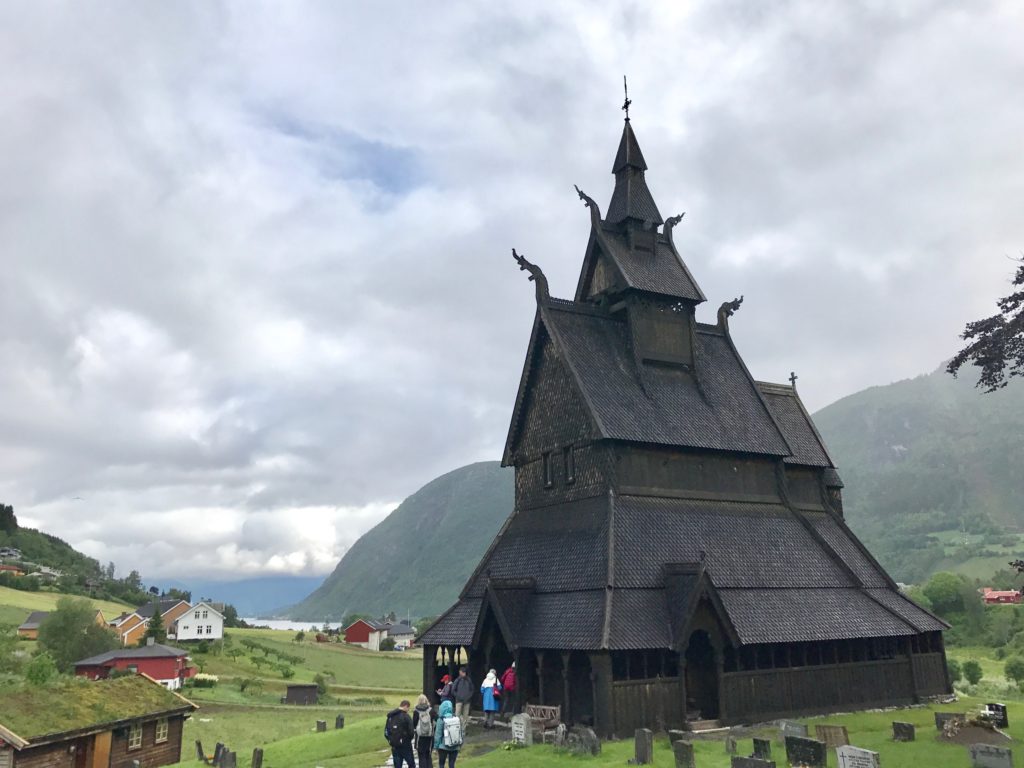
By P. F. Sommerfeldt –
In the 10th-11th century when Norway was transitioning from a pagan Viking land to embrace early Christianity, churches were built out of wood in much the same way ships were constructed. I was recently in Norway (June 2019) on a National Geographic Expedition and marveled at how these churches were always placed on strategic sites with vistas, often a dramatic view of the nearby sea on a fjord and thus also visible from that fjord. Many of the original stave churches have disappeared and some have been reconstructed along traditional Medieval stave architectural style. Of the likely 1000 original wooden stave churches built between, only 29 remain across Norway. Most had disappeared by 1800 and during the Black Plague of 1346-52 few new ones were constructed, since the medieval population was devastated, so the climax of Medieval Christianity when they were mostly the epitome of wealth and proud Norwegian distinction, although they are also found elsewhere in Scandinavia as expressions of medieval Christianity in Sweden and to an extent in Denmark, although Norway’s stave churches are the most uniform.
One of the most important architectural stave elements is a shiplike “keel” roof, upside down of course, and stave churches usually had four main pillars (a large oak or pine beam called stafr in Old Norse and stave in modern Norwegian) at the nave corners, visible from both inside and outside.
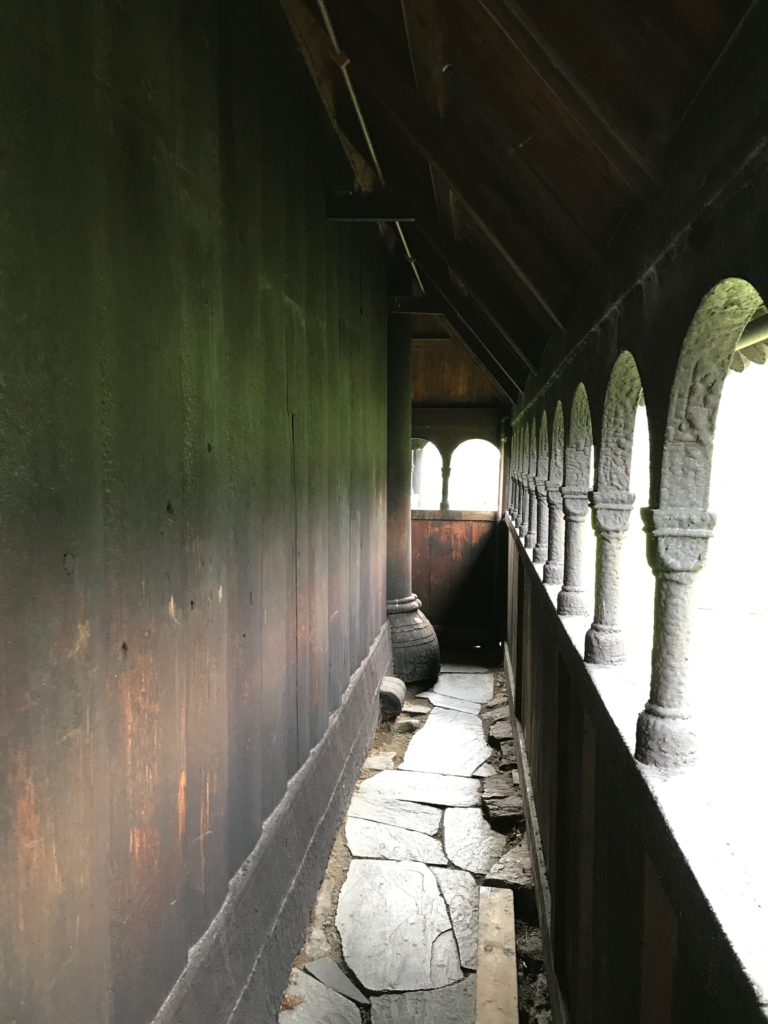
Some of the other beautiful Norwegian stave churches can be seen at Borgund on the Sognefojord and Heddal and Eidsborg in Telemark west of Oslo. Perhaps the easiest to see is in the Historic Park of Oslo at Bygdøy Peninsula: the 12th century Gol Hallingdal Stave Church, removed from its original location but realistically using the same wood and materials.
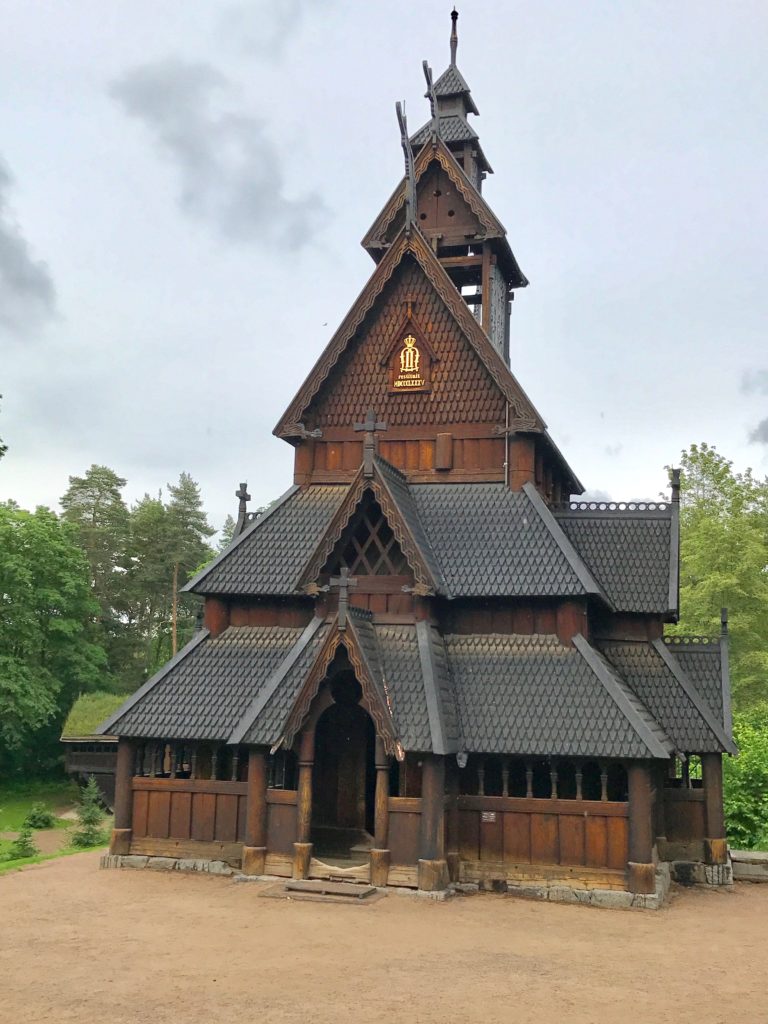
Even modern stave church imitations like St. Olaf’s (1897) in Balestrand (see below) not far from the famous historic Kviknes Hotel was clearly built in distinct stave style. St Olaf is actually an Anglican Church but its architects had studied stave construction in the late 19th c. when many stave churches were being conserved or reconstructed, since the wood of many had burned. Because the bulk of the Norwegian stave churches are contemporary with the Romanesque style of architecture with rounded arches, their interiors and arcades are typically Romanesque rather than the following Gothic style, which arrived mostly later in Norway. Nidaros Cathedral in Trondheim, the most northern Gothic cathedral in the world was built between the 11th to 14th centuries over the tomb of St. Olaf and rebuilt in the last century.
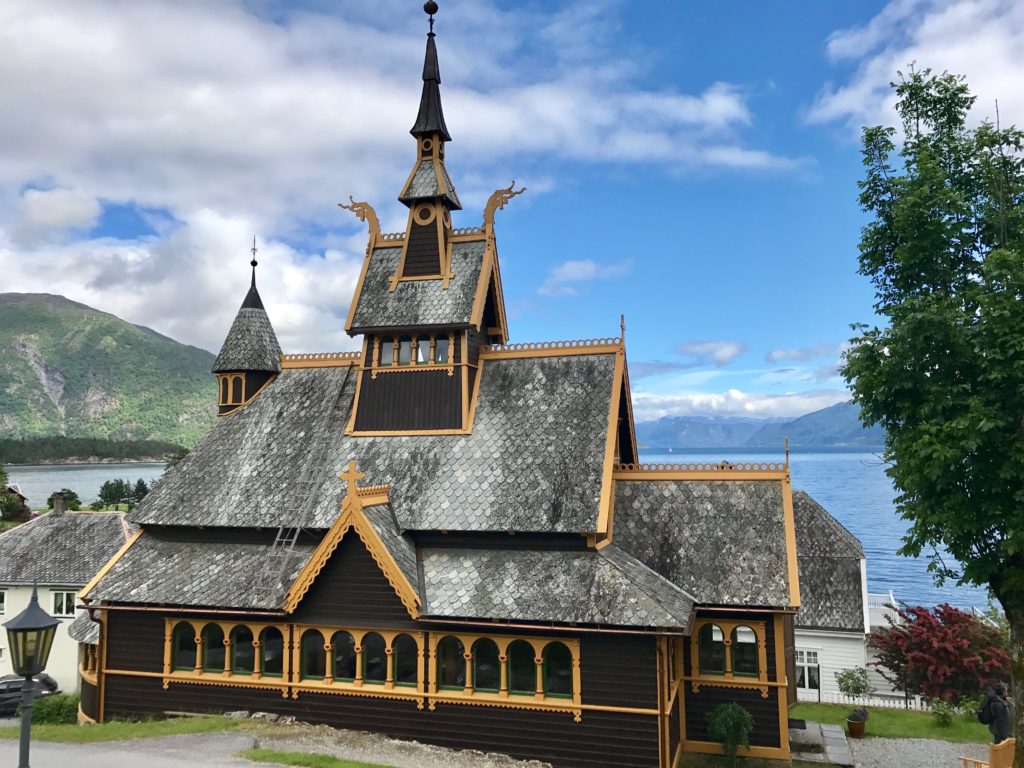
Another important element commonly seen is the typical “dragon” prow of the top roof tiers, as seen below in the reconstructed Fantoft stave church – only recently burned down in the late 20th century but faithfully rebuilt by local Bergen philanthropy. Fantoft actually has dragons at the top two tiers.
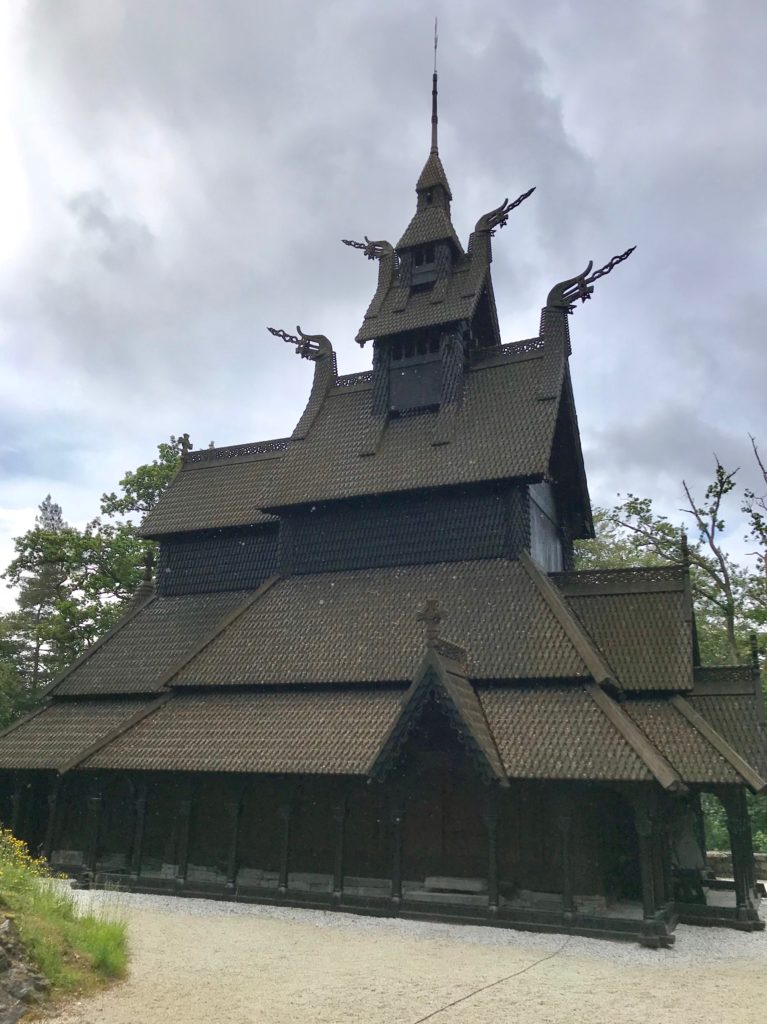
Due to their vulnerability to fire – especially when covered with preserving pitch – stave churches were gradually replaced with stone churches, as seen in Bergen and above Vik and many other places. But anyone traveling to Norway must take time to see at least several stave churches for comparison to see both their continuity and variations in size and other features. The best and most useful book I found on stave churches was in Nidaros Cathedral shop in Trondheim: Norwegian Stave Churches published by Arfo in Oslo, elegantly written and with many color photos and excellent explanations with historical notes.